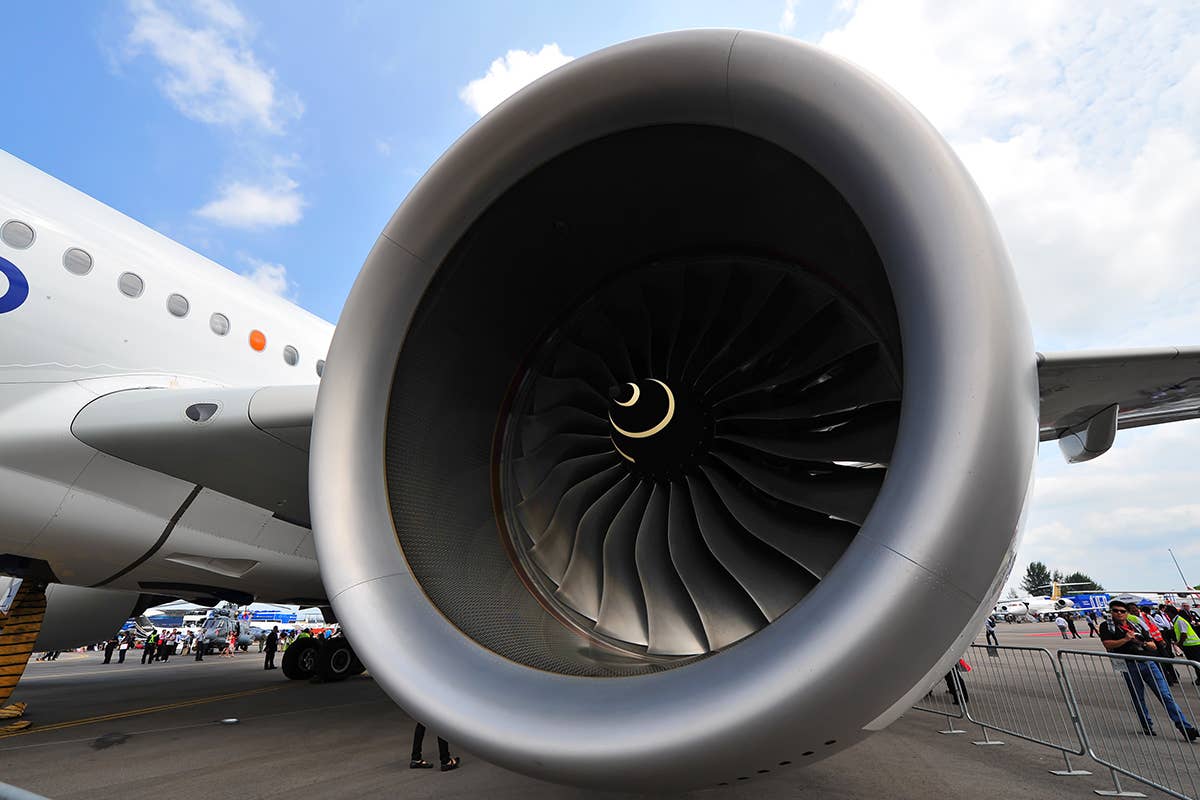Rolls-Royce Sees Rising Demand for Large Aircraft
According to a report, the British engine-maker expects a full recovery of the widebody airliner market by 2024.

Rolls-Royce is the sole powerplant provider for the Airbus A350 widebody airliner. [Shutterstock]
Rolls-Royce executives say they’re seeing strong signals that demand may be rising for large, long-haul airliners, according to the Financial Times, a potential sign of an industry resurgence in the wake of the pandemic.
During a recent media tour of Rolls-Royce’s engine manufacturing plant in Derby, England, Chris Cholerton, president of Rolls-Royce’s civil aerospace division, told the FT that signals show “a lot more interest around potential widebody [sales] campaigns starting again now.”
As passenger airlines struggle with limited seating capacity amid this summer’s strong bounce-back of air travel, Cholerton said Rolls-Royce now expects full recovery of the widebody market by 2024, the FT reported. Some carriers are “looking for deliveries from 2025 onwards.”
Rolls-Royce hosted the factory tour in advance of the U.K.’s biennial Farnborough International Air Show, where billions of dollars in new aircraft orders are traditionally announced. Set to kick off July 18, the event will be a key indicator of the airline manufacturing sector’s strength two years after the pandemic sent air travel plummeting to record lows.
Demand for new widebody airliners presents a strong sign for recovery, the FT reports, because they’re largely used on long-haul routes, which have lagged behind sales of smaller narrowbody aircraft.
An increase in widebody sales also bodes well for Rolls-Royce, which manufactures the Trent XWB turbofan engine—the sole powerplant for Airbus’s most recent widebody twin, the A350. Airbus is projecting A350 production will increase from five per month to six per month by next year.
Earlier this year, Boeing revealed another delay in the expected entry into service of its next available widebody airliner—the 777X–now set for delivery in 2025. Cholerton said that delay may help push additional customers to the comparable Airbus A350-1000 variant.
“What we are both seeing is this increase in the market of widebody campaigns…some of those are potentially quite big,” Cholerton told the FT.
Airbus introduced a new freighter variant of the A350 last year to meet the needs of the air cargo segment. The A350F also is powered by twin Trent XWB engines.
Cholerton’s remarks come after a major restructuring at Rolls-Royce, resulting in 9,000 fewer employees from a total headcount of 52,000, according to the report. The company has invested in more automation at the Derby factory, which the FT reports will cut production time for some turbine blades. Efforts are also being directed toward decreasing downtime for engine maintenance and reducing time spent for engine overhauls.

Subscribe to Our Newsletter
Get the latest FLYING stories delivered directly to your inbox






